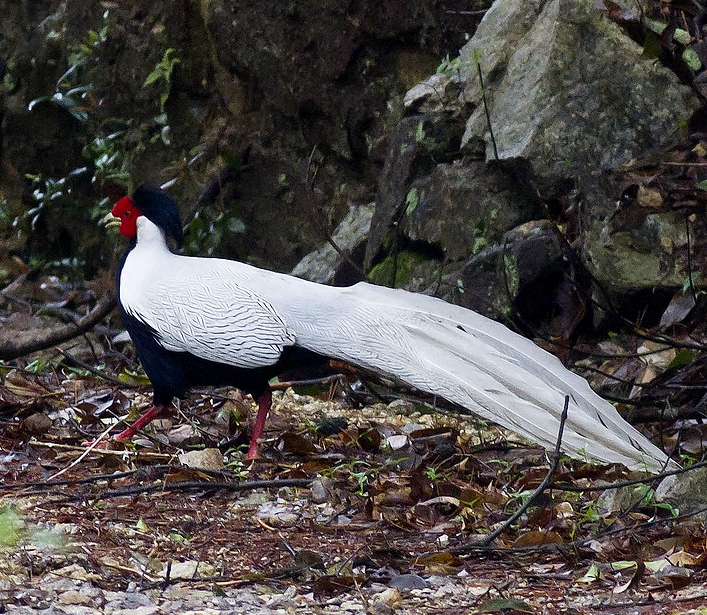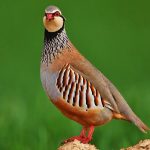Silver pheasant

 |
| Photo by Allan Drewitt (Flickr) |
Common name:
silver pheasant (en); faisão-prateado (pt); faisan argenté (fr); faisán plateado (es); silberfasan (de)
Taxonomy:
Order Galliformes
Family Phasianidae
Range:
The silver pheasant is found in south-eastern Asia, from southern China down to Myanmar, Thailand and Vietnam.
Size:
These birds exhibit a large sexual dimorphism, especially because of the large tail of the males. Including the tail, the males are 120-125 cm long while the smaller females are 60-75 cm long. The males weigh 1,1-2 kg while the females weigh 1,1-1,3 kg.
Habitat:
Silver pheasants are found in dry grasslands and tropical moist forests, especially along the forest edge, from sea level up to an altitude of 1.000 m.
Diet:
They forage on the ground, mainly taking seeds and fruits, but also some invertebrates.
Breeding:
Silver pheasants breed in March-June. The males are polygamous, often living in small groups with one male and several females. They nest on the ground, where the female lays 6-9 eggs. Some nests can have up to 15 eggs, but these a most likely from several females. The eggs are incubated for 25-26 days and the precocial chicks are able to feed themselves soon after hatching. Both sexes help the chicks find food and protect them from predators.
Conservation:
IUCN status – LC (Least Concern)
This species has a large breeding range and is reported to be widespread and common. Some populations are declining locally owing to ongoing habitat destruction and unsustainable levels of hunting.
































